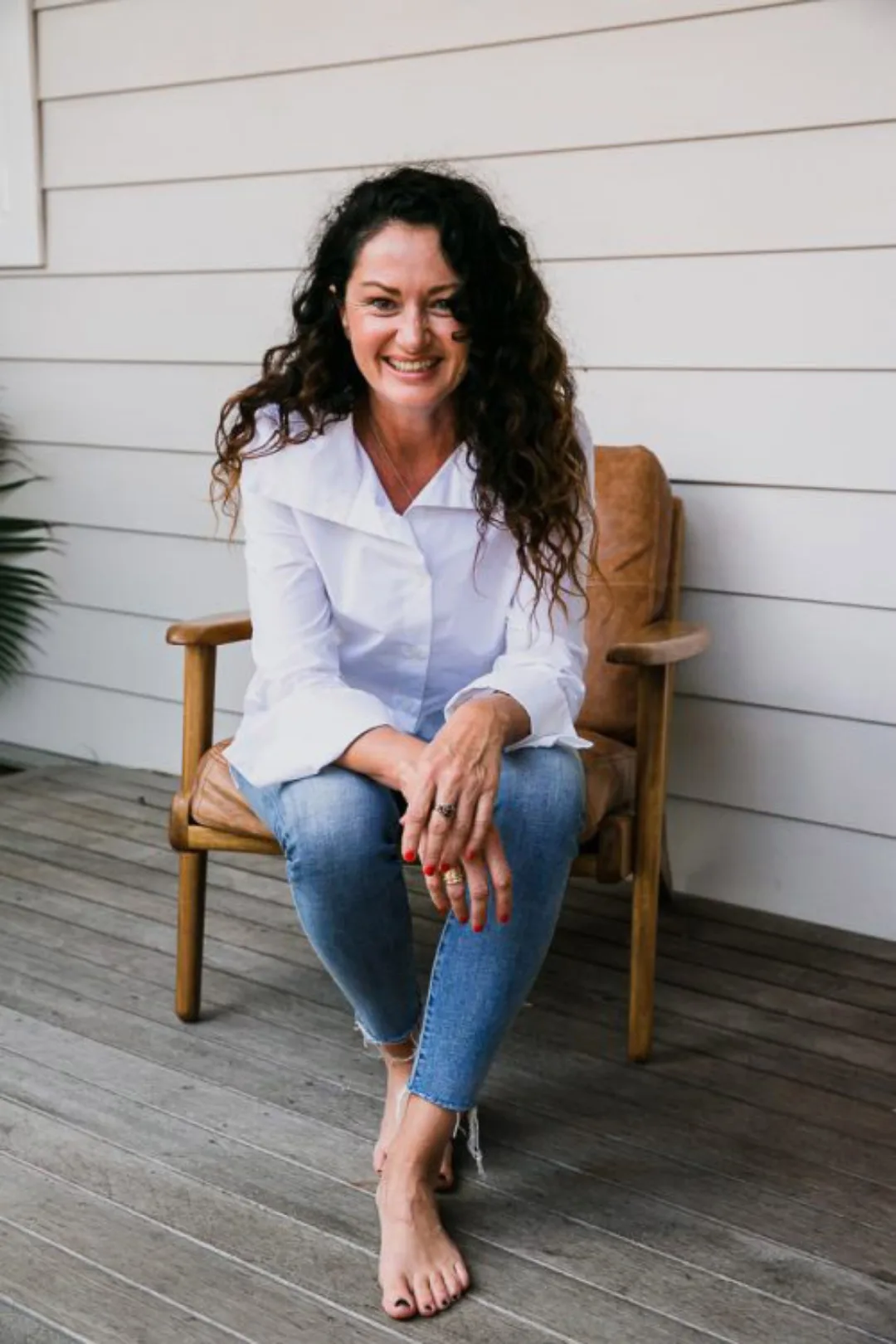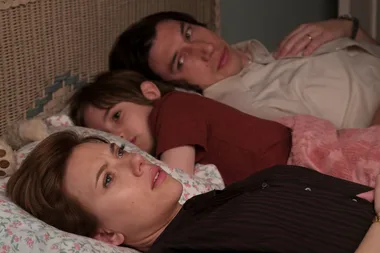In our suburban street we have not one but three couples who are currently “bird-nesting”: the name given to divorcing couples who continue to co-own (or co-rent) one home for their children, while the parents move in and out on alternate weeks (or other schedule they’ve agreed upon).
Also known as “magpie parenting”, the exact arrangement depends on a couple’s circumstances.
On their “off week”, many parents couch surf with friends or boomerang back to their own parents. A privileged few can afford to rent a “spare” apartment (or two!) to live in when they’re not nesting with their offspring.
The latter was the option chosen by journalist Anna Whitehouse (known as “Mother Pukka”) and her husband, Matt Farquharson, after they split last year, although she admits it’s a “financial stretch” and calls it a “privilege” that “doesn’t work for everybody”.
She and Farquharson “fly in and out” of their family home in London and also have an apartment nearby, which they both share, with a handover happening every Sunday.

When Whitehouse revealed her family’s arrangement on Instagram to her more than 410,000 followers, the comments underneath ranged from admirable (“this is such a gentle, child-centred option – amazing!”) to downright puzzled (“how can anyone afford this?”).
Even Whitehouse admits that it comes with challenges.
“We moved out and effectively back in together,” she writes, but the arrangement is working for the family “for now”. The downsides include continuing to have a shared bank account and needing clear boundaries with regards to cleanliness. It might seem untenable but the alternative – splitting all assets and dividing up your life 50/50 – can be equally crushing.
According to “divorce doula” Nikki Parkinson, a family law expert and the creator of The Divorce and Separation Hub, more and more couples are getting creative about their breakups to protect their hearts and their bank balance.
“As a family law expert, I have seen nesting work well in the short-term,” says Parkinson. “Most couples do it for between three and six months. It has its benefits, particularly financial, but it does require very strong boundaries and clear communication.”
With the rental crisis and cost of living rising, Parkinson predicts that bird-nesting will become increasingly common, along with the trend for ‘DIY divorces’ (her popular online course, UnMarry Me, guides couples through this process).
In Australia, eligible couples can fill in their own divorce application and file it through an online portal (for a fee of $1060). In contrast a “traditional” divorce, led by a lawyer, can cost between $10,000 and an eye-watering $100,000. It’s a figure that a generation raised with online discount codes are not prepared to accept.
Instead, couples are searching for ways to get a bargain breakup, but it does mean working together.

Consciously Cost-Cutting
In March 2014, when celebrity couple Gwyneth Paltrow and Chris Martin announced they were “consciously uncoupling”, it was so unconventional that it caused an outrage.
Ten years on, their breakup strategies (living a “short stroll” from each other, sharing brunch and continuing to go on family holidays with their children) have become less unconventional and more of a necessity.
Carolyn Devries is the founder of New Way Lawyers, the first non-profit law firm in Australia. She says that separated couples are being significantly impacted by the rising cost of living, and it’s making an amicable split seem more appealing.
“Despite the raw emotions and hurt that follow separation, most couples who separate don’t want their divorce to end up in court,” says Devries. “There is a growing awareness and education about the negative impact of high-conflict separations.”
Many couples can still agree on one thing: they don’t want to be broke and heartbroken.
“For some people, it may mean living separately under the same roof with their ex,” explains Devries. “With constrained budgets, people are also trying to self-educate about the legal aspects of separation and divorce. While this is possible, it also comes with the risk of incorrect information.”

Full disclaimer: I did a “DIY divorce” 10 years ago. I don’t write about that breakup in articles or online, as part of my agreement with my ex-partner.
What I will say is, when I was searching for information on “DIY divorces” there was nada at that time, but that’s no longer the case. There is an abundance of “discount divorce” content on TikTok.
Topics range from “Cheapest way to divorce” (more than 1.3 million views) to “Should divorce have a 50/50 split of assets?” (more than 8.2 million). And then there’s the popularity of social media “divorce diaries”, where people reveal how they’re doing it – and how they’re affording it.
This isn’t just about saving on big-ticket items (a lawyer) or splitting a house (because many millennials don’t own one!). It’s also about saving on everyday expenses.
When hospitality manager Hannah* faced the prospect of going from a double to a single income, she and her now ex-husband decided not to rush dividing up all their memberships.
“At the time, he could get cheap gym membership through my work,” she recalls. “While I’d use his Uber Eats Business account to order lunch – and charge it to his employer – and he was happy for me to keep doing it.”
In the end, their arrangement had an expiry date.
“After 12 months of separation, when we could officially file for divorce, it felt like a good time to end it,” she says. “But for a while there, it gave us something to laugh about – an in-joke we could still share together.”
In 2024, breakups are no longer clean-cut. If you live in a small town, work in the same industry (like Anna Whitehouse and Matt Farquharson), or you share friends, either virtually or in real life, then your lives will continue to be “entangled”.
Realising this, fewer couples are going for a cold, hard split. Instead they are blurring the edges of their breakup, meaning they might continue to co-own a car or share a Netflix login and a family account on Spotify – at least until one person starts dating again (who wants to see their ex making playlists for a new partner?).
Experts are warning, however, that we shouldn’t be too friendly when it comes to our finances.
“I’ve had several clients who’ve tried [cost-saving arrangements], handle them poorly and cause more damage,” says Bonnie Douglas, a divorce coach and family mediator. In one situation where a couple continued to live together post- split, the ex-husband found a condom in the bathroom bin and amicable went out the window.
“They’re now fighting over a net asset pool of $300,000 in court, where they’ll each spend $80,000 or more,” says Douglas. “However, another couple – artists who are a bit bohemian – have made it work beautifully so far. They’re going to ‘bird nest’ until their kids are in high school.”
She believes the key is “flexibility, maturity and a high moral code from both parties”.
Douglas also recommends putting agreements in writing.
“Make two separate agreements with your ex – one for parenting arrangements and one for financials – and sign and date them,” she says. “It’s not legally binding more seriously. Our memories are crap at the best of times, so write everything down and then make absolutely sure you both understand what you’ve agreed to.”

Not A Women’s Issue
When British fashion editor Stacey Duguid split from her husband in 2020, they continued cohabiting in their family home with their daughters, before dividing up their assets when lockdown ended.
In her book, In Pursuit of Happiness, Duguid is honest about the reason behind their split and the outcome of their divorce (she was unfaithful; she was left with just 4.6 per cent of the family home).
She says, in hindsight, she buried her head in the sand when it came to finances and she was trapped in a “childlike state” when it came to money.
Today Duguid is an advocate for women increasing their financial literacy, especially early in a relationship. “For many women, broaching the icky ‘money subject’ is unimaginable,” she explains. “I’m only half-joking when I say, put away your wedding Pinterest board and get your spreadsheets out.”
In the past, women have been the financial underdog in divorce.
A 2018 study found that, “after divorce, women experience disproportionate declines in household income and standard of living” (it’s worth noting that we come out better in terms of health and wellness). But this is changing, with couples taking it upon themselves to encourage equality.
A growing trend that Parkinson has seen is the higher- earning partner choosing to pay more towards their spouse’s cost of living, post-breakup. For example, if one partner has chosen to move out of the family home, the other partner will help them afford to rent an apartment.
This is before they’ve actually divorced. “It’s a useful way to level the playing field, especially for the person who is leaving,” says Parkinson.
I’ve seen evidence of this in my friendship group: one of my male friends pays the rent on his ex-wife’s apartment because they split up when she was pregnant and he doesn’t want her to feel financially vulnerable; while another guy bought his ex-wife a car after they split.
It’s like the breakup version of a “push present” – except this is commemorating an ending, not a new beginning.

And before you say this is unfair for the “sugar partner”, let’s consider the unpaid labour that women still tend to do in a marriage, and their loss of income while raising children.
Whitehouse has called her marriage “collateral damage for a society that isn’t set up for women to succeed, but rather a quagmire of inequality at work and poor postnatal care”.
In other words, we’re putting a huge amount of pressure on working mothers, so why not alleviate some of the hardship post-breakup?
“The cutthroat side of divorce still happens, of course,” says Parkinson. “But, generally, I think people are becoming more emotionally aware and realising that ‘breaking’ the other person in a breakup isn’t necessary and doesn’t benefit anyone.”
In her 2023 TEDx Talk, Parkinson asks a question: why do we marry as a community but divorce alone?
She rallies for a world in which we end a marriage with the same community spirit as we started it, especially in this financial climate.
“In the same way we split the cost of a wedding – including accepting help from our family and our partner – we need to let the people around us shoulder the financial burden of a breakup,” she says. “Divorce is a rite of passage; it’s just another milestone of life.”



